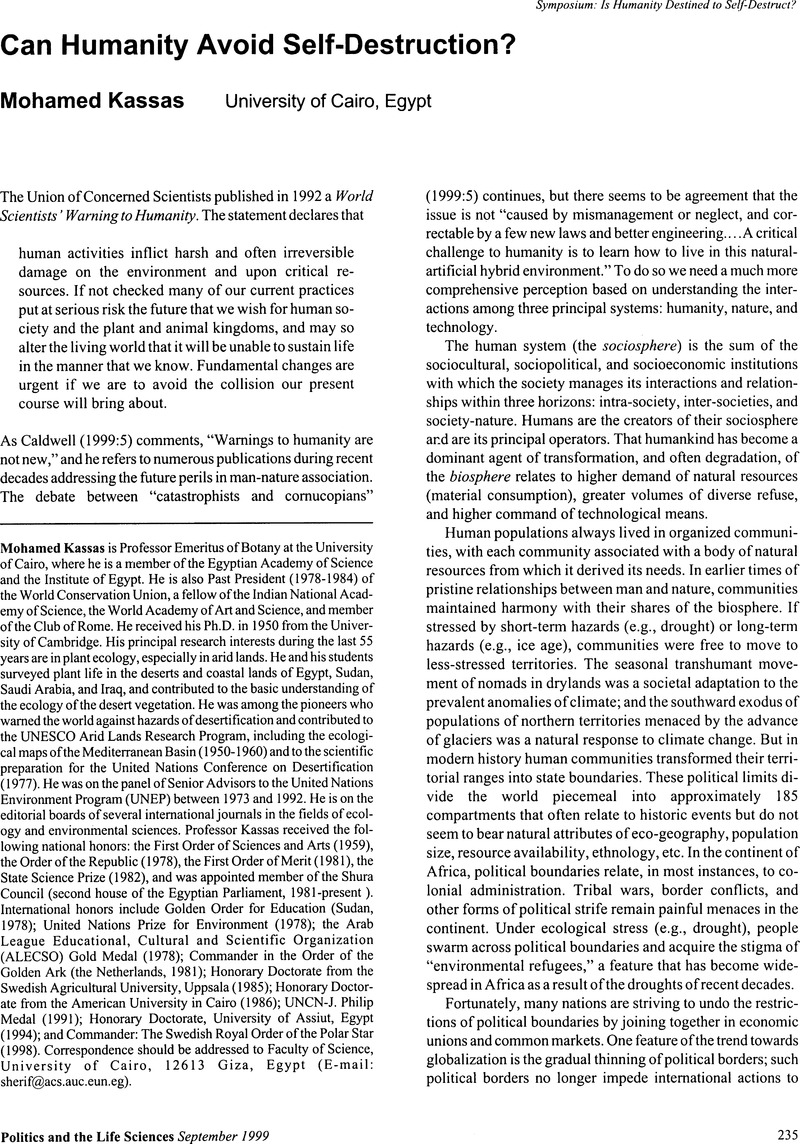No CrossRef data available.
Article contents
Can Humanity Avoid Self-Destruction?
Published online by Cambridge University Press: 17 May 2016
Abstract
An abstract is not available for this content so a preview has been provided. Please use the Get access link above for information on how to access this content.

- Type
- Symposium: Humanity and Self-Destruction
- Information
- Copyright
- Copyright © Association for Politics and the Life Sciences
References
Ayres, R.U. (1989). “Industrial Metabolism.” In Technology and Environment. U.S. National Academy of Engineering.Google Scholar
Caldwell, L.K. (1990). Between Two Worlds: Science, the Environment and Policy Choice. New York: Cambridge University Press.Google Scholar
Caldwell, L.K. (1999). “Is Humanity Destined to Self-Destruct?” Politics and the Life Sciences 18: 3–14.Google Scholar
Gray, P.E. (1989). “The Paradox of Technological Development.” In Technology and Environment. U.S. National Academy of Engineering.Google Scholar
Lynn, W.R. (1989). “Engineering Our Way Out of Endless Environmental Crises.” In Technology and Environment. U.S. Academy of Engineering.Google Scholar
Von Weizsäcker, E., Lovins, A.B., and Lovins, L.H. (1997). Factor Four: Doubling Wealth—Halving Resource Use. Washington, DC: Island Press.Google Scholar
World Scientists' Warning to Humanity (1992). Cambridge, MA: Union of Concerned Scientists, November 18.Google Scholar


